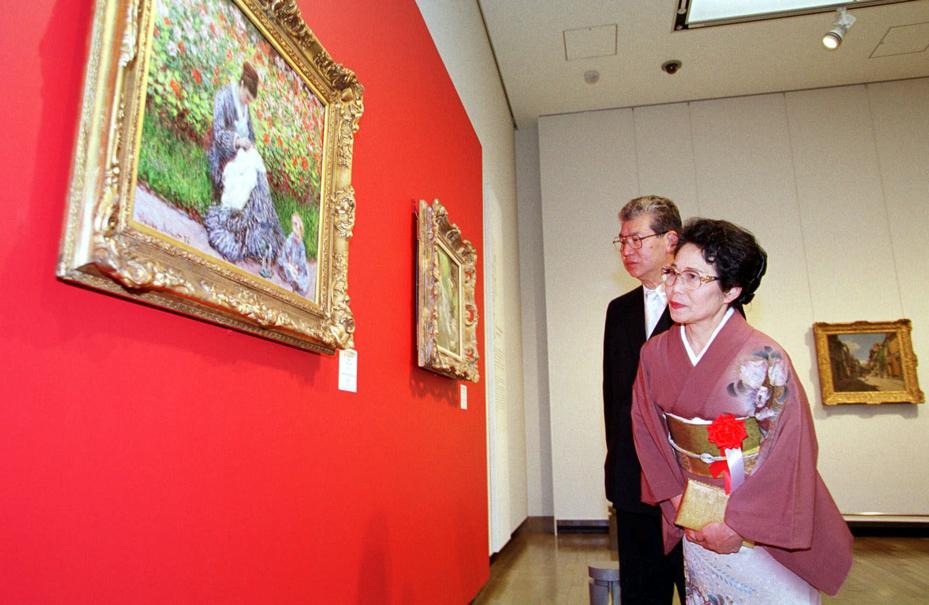Did the Museum of Fine Arts’ ill-fated experiment with an outpost in Japan bring any benefits besides money?
If it did, I don’t see them. What I see is a squandered opportunity.
The MFA has announced that its partnership with Nagoya/Boston Museum of Fine Arts, its Japanese partner, won’t be renewed when the contract expires in 2019.
Before the Guggenheim Museum kicked off its worldwide expansion, before the Louvre had even planned its outpost in Abu Dhabi, the MFA set an exciting precedent by becoming the first Western art museum to establish a branch in Asia.
“This is a model for the entire world to look at and admire,’’ crowed Malcolm Rogers, the MFA director, at the 1999 grand opening of Nagoya/Boston Museum of Fine Arts.
But in retrospect, it was a model no one will want to follow. Nagoya was a pinched and unimaginative adventure from the start.
When the project was conceived, under former MFA director Alan Shestack, Japan was booming. The MFA, by contrast, was in dire financial need. The prospect of $50 million over 20 years seemed like a solution to many of the Boston museum’s problems.
But by the time Nagoya/Boston Museum of Fine Arts opened, Japan’s economy had already hit the skids. And so it wasn’t long before the good burghers of Nagoya were asking for relief from what had become an onerous contract.
They got it, eventually. But in the process they lost the right to be the exclusive venue for the MFA’s shows.
This led the MFA down a slippery slope. Sniffing commercial opportunities, it began sending more and more of its most prestigious masterpieces not just to Nagoya but to other venues in Japan. From there, they were often sent on to Australia, or to other venues willing to pay fees that didn’t just cover costs — they helped replenish MFA coffers.
The practice got completely out of hand. For long periods, visitors who had paid steep prices just to get into the MFA in Boston found they couldn’t see many of its most celebrated masterpieces — including paintings by Renoir, Cezanne, Gauguin, Manet, Monet, Velazquez, El Greco, and many others.
They had been rented out. And indeed, before the contract with Nagoya expires, another 80 works are due to be sent to Japan next year — for an entire year — as part of an exhibition called “Great Collectors.’’
Meanwhile, Nagoya/Boston Museum of Fine Arts went on being its unsatisfactory self. Despite its name, it no long had a special — i.e. exclusive — relationship with the MFA.
The whole thing was a nakedly commercial, one-way arrangement. Nagoya was never allowed to grow into something more than an empty vessel to be filled with whatever the MFA saw fit to send (preferably Impressionist and Post-Impressionist paintings). No one had the vision or the will to turn it into something more ambitious.
Despite the extraordinary history that Boston and Japan share, no one sought to cultivate a deeper, two-way relationship. Japanese artists and curators, for instance, were never invited to organize shows of Japanese art that might travel to Boston. Exchanges and residencies were never established.
Instead, parties at both venues bickered about which works the MFA would be willing to lend in order to attract the big audiences Nagoya needed to offset costs. Meanwhile, MFA curators who wanted to get on with more meaningful work had to devote huge amounts of time to feeding the Nagoya beast.
At its heart, Nagoya was all about making money off the MFA’s collection. Rogers and his deputy director Katie Getchell saw it as an opportunity to advertise the MFA brand, and perhaps it did.
But one could equally argue that the Nagoya experiment saved Japanese audiences the trouble of visiting Boston, since they could now see their favorite Van Goghs and Monets without leaving home.
When you are able to show only about five percent of your collection, it seems logical to consider opening branches in other parts of the world, especially if you can make money from the arrangement. The problem is, people in those other places want to see the same few stellar works audiences at home want to see.
Sebastian Smee can be reached at ssmee@globe.com.




